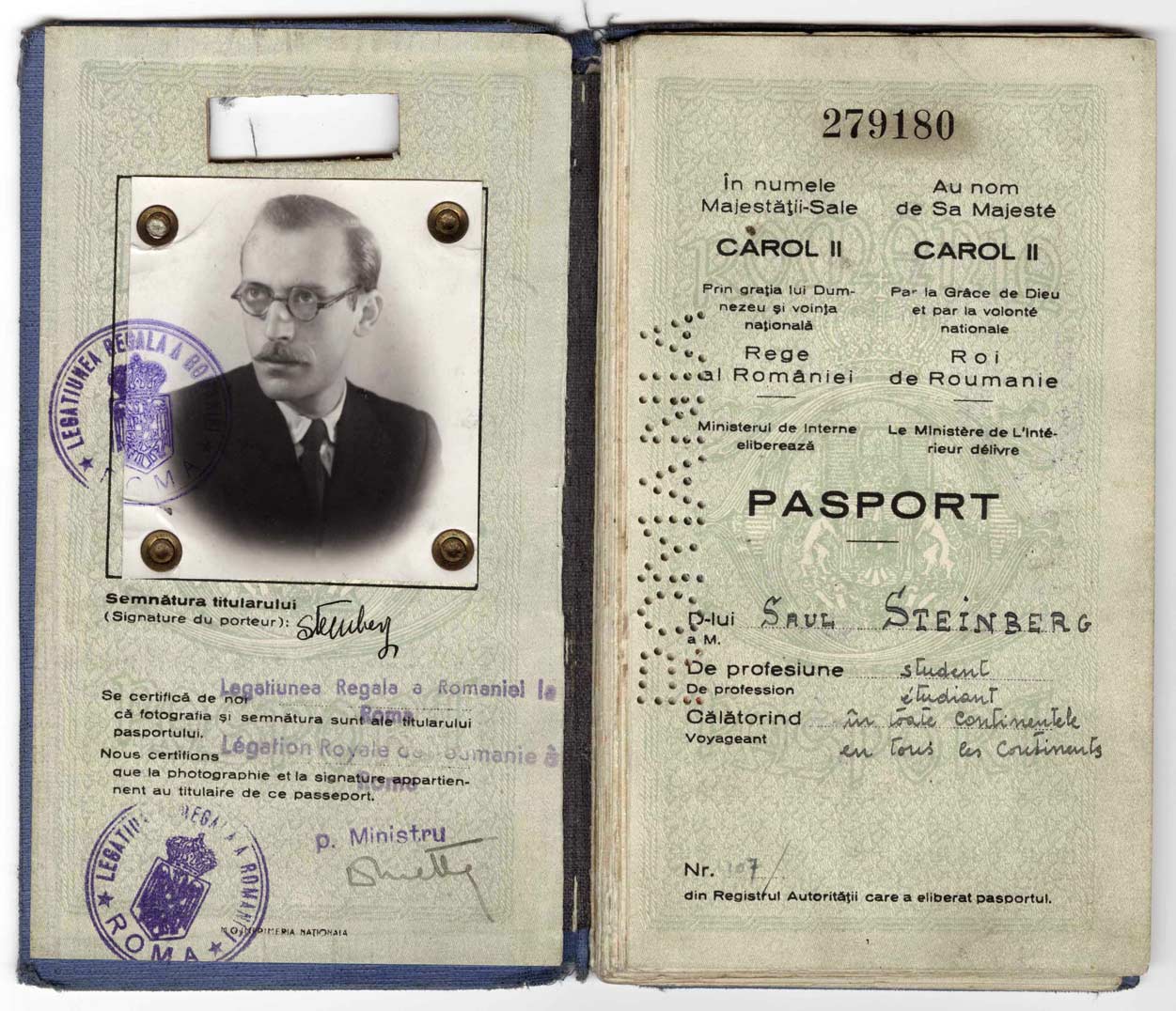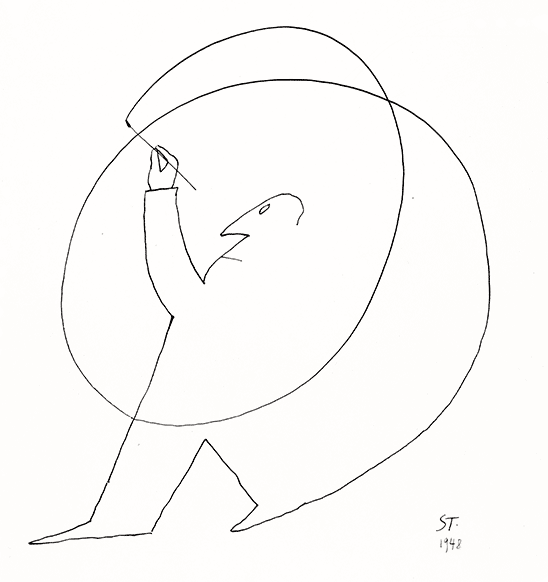1940
Through Civita’s agency, ST drawings are published for the first time in US periodicals— Harper’s Bazaar (March 15), LIFE (September 27), and Town & Country (October)—as well as the Brazilian magazine Sombra.
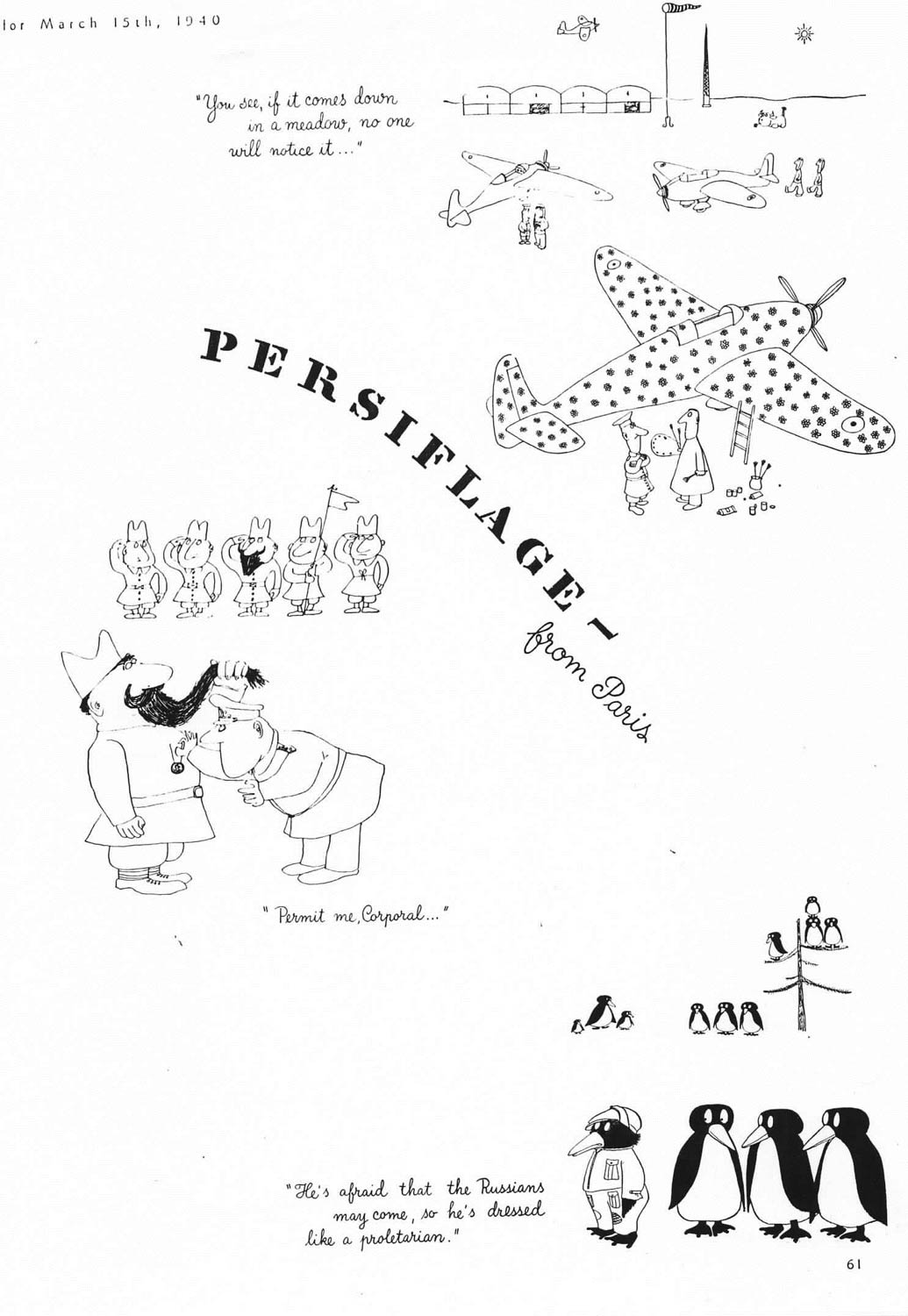
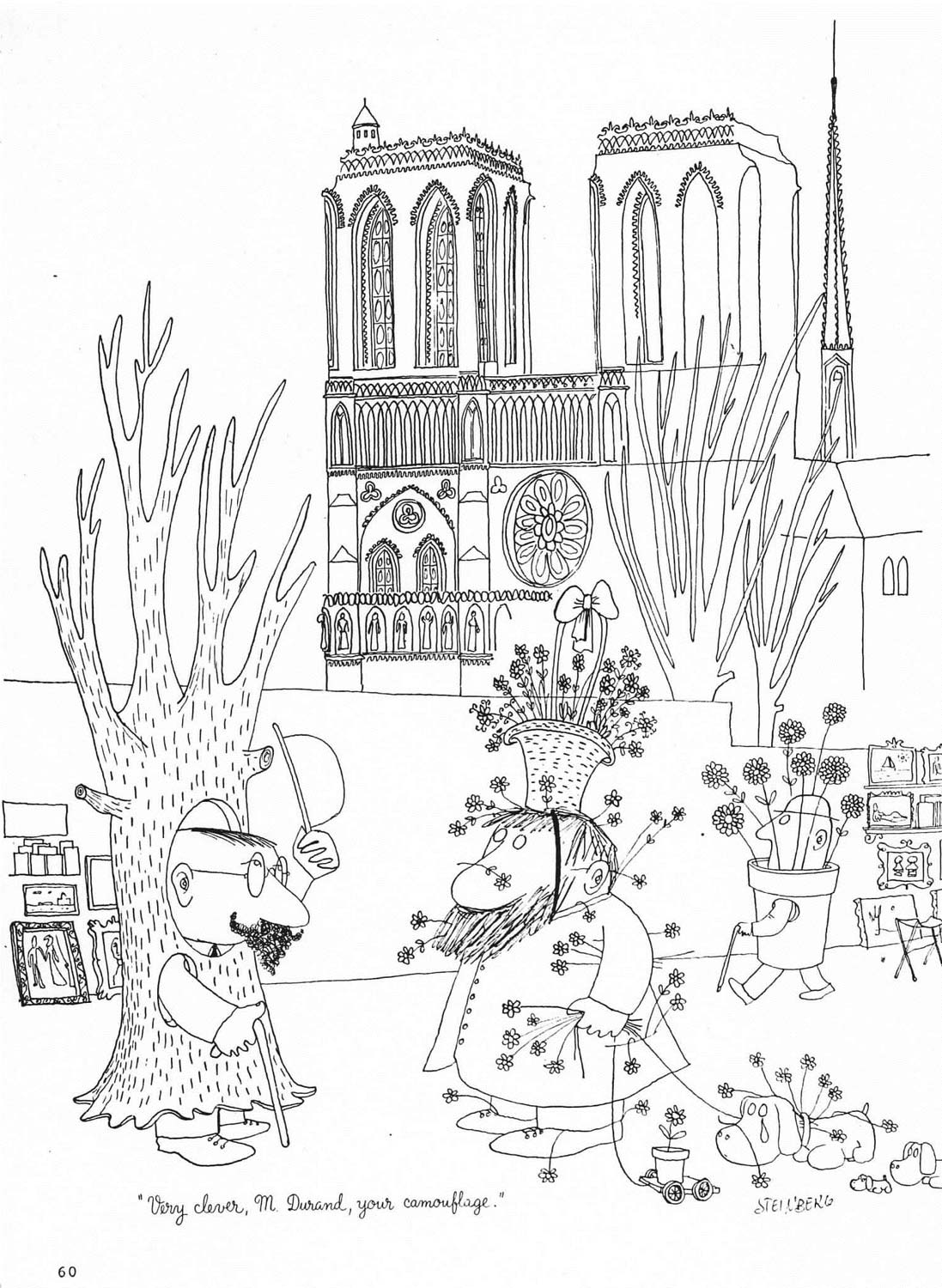
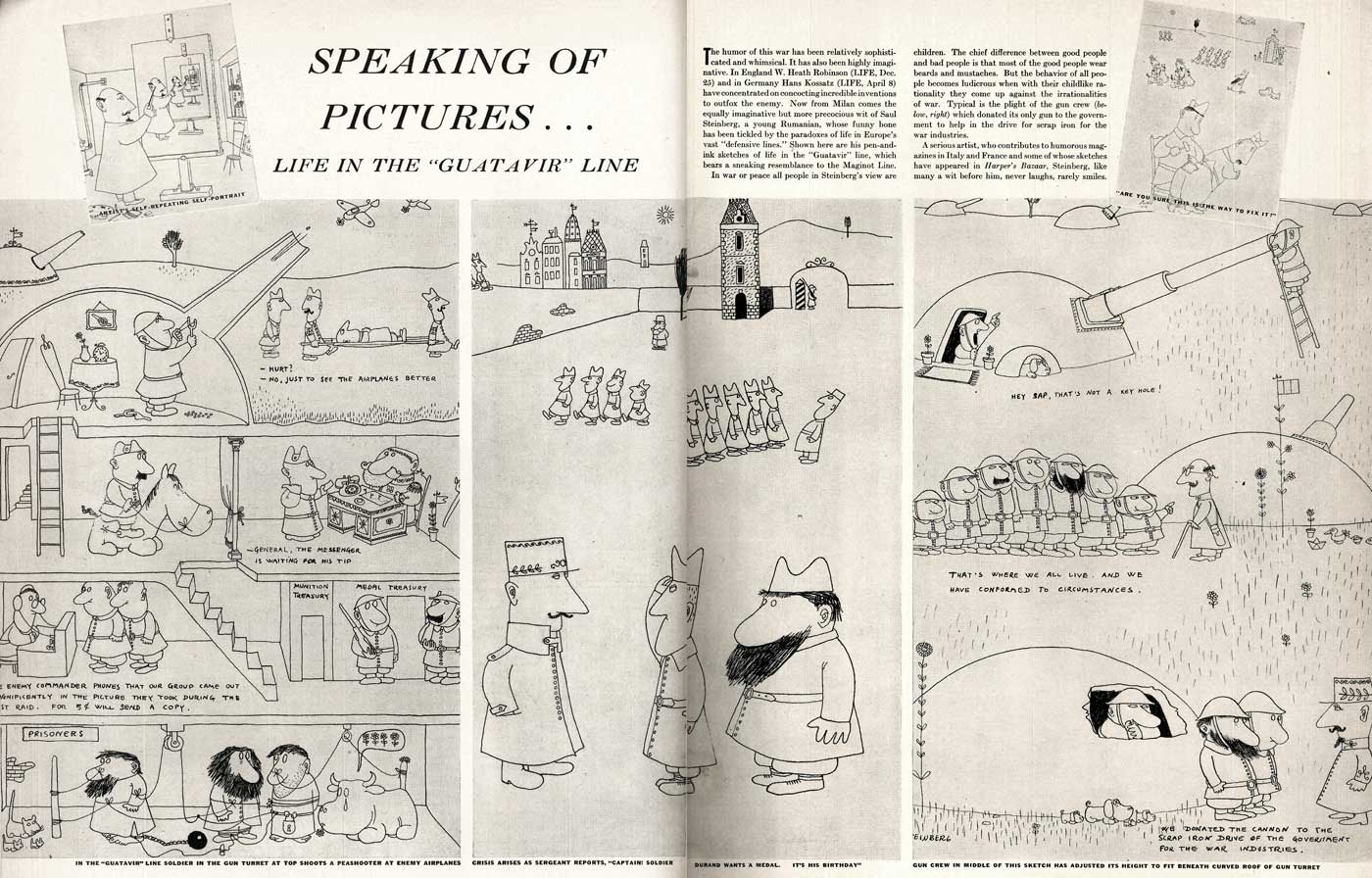
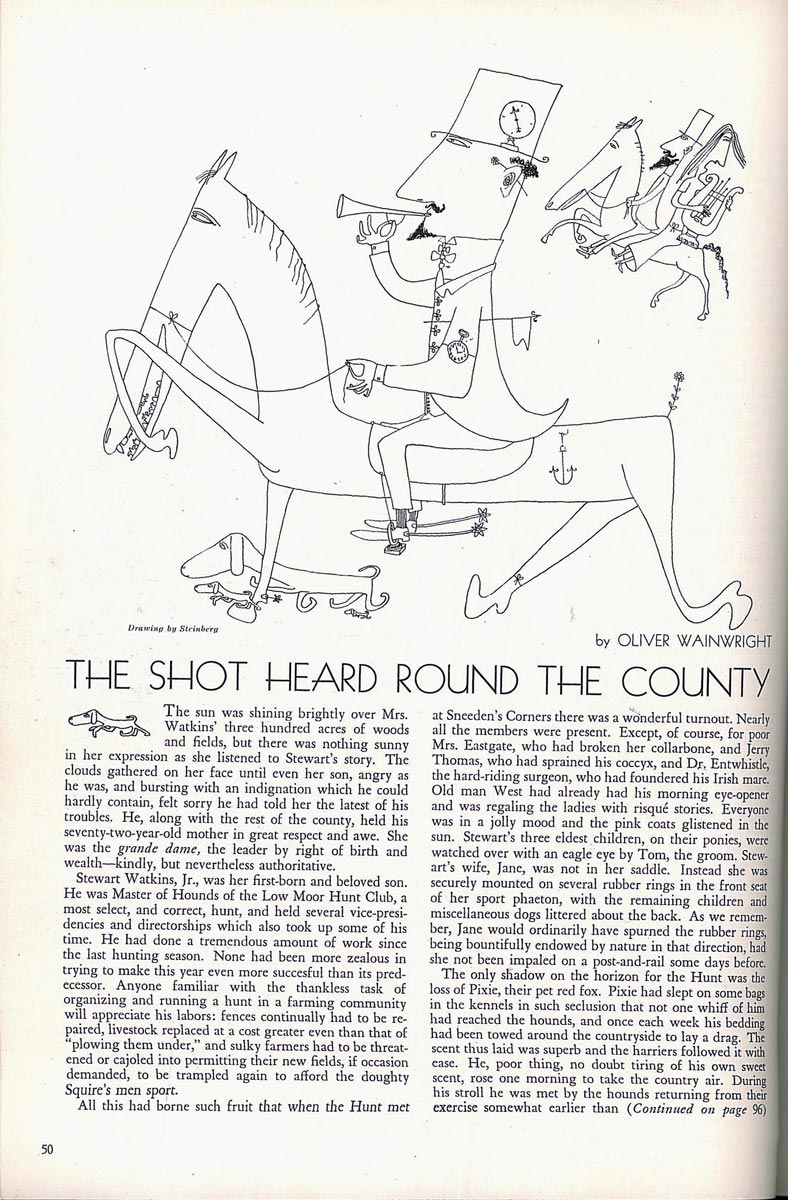
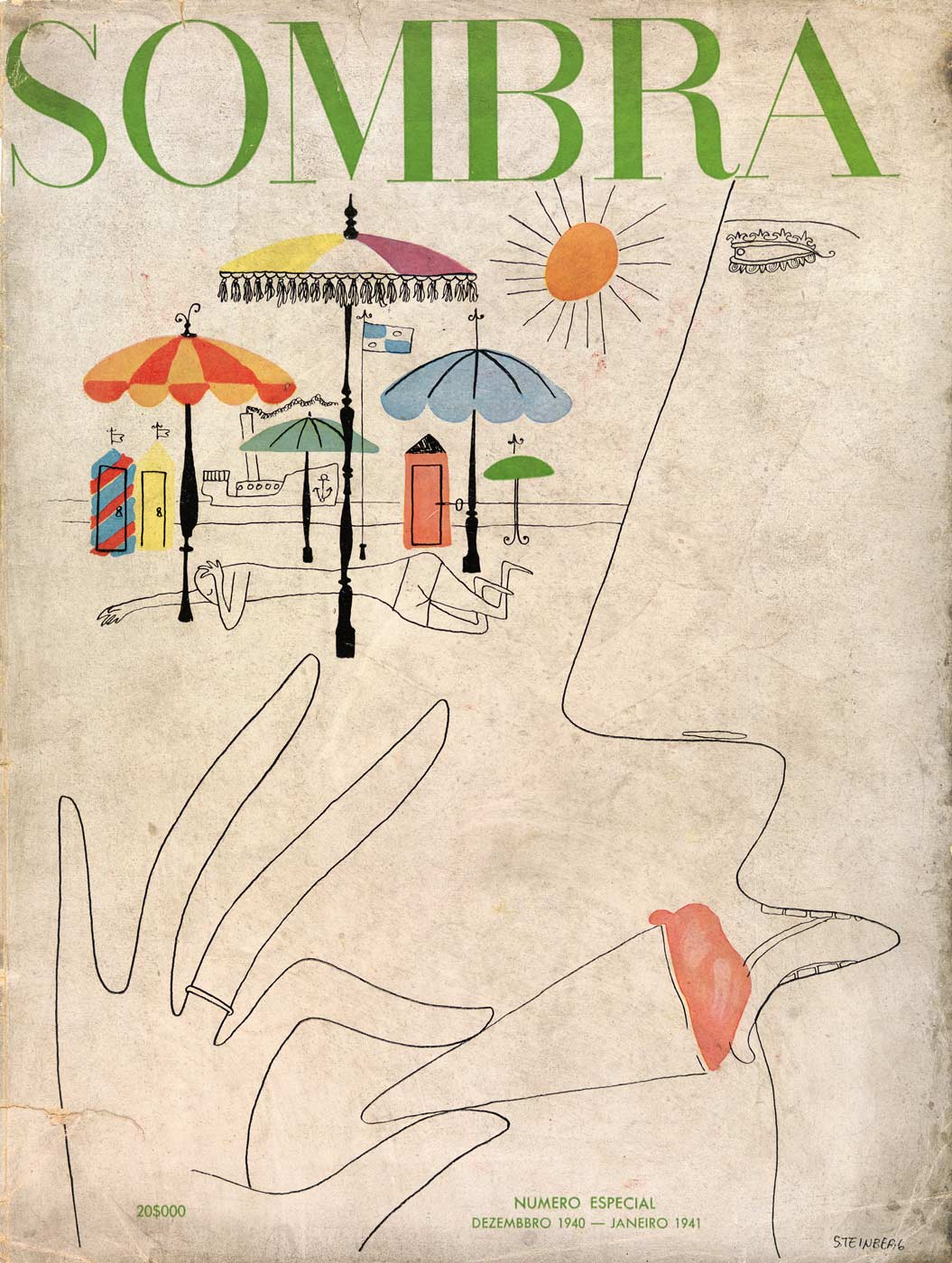
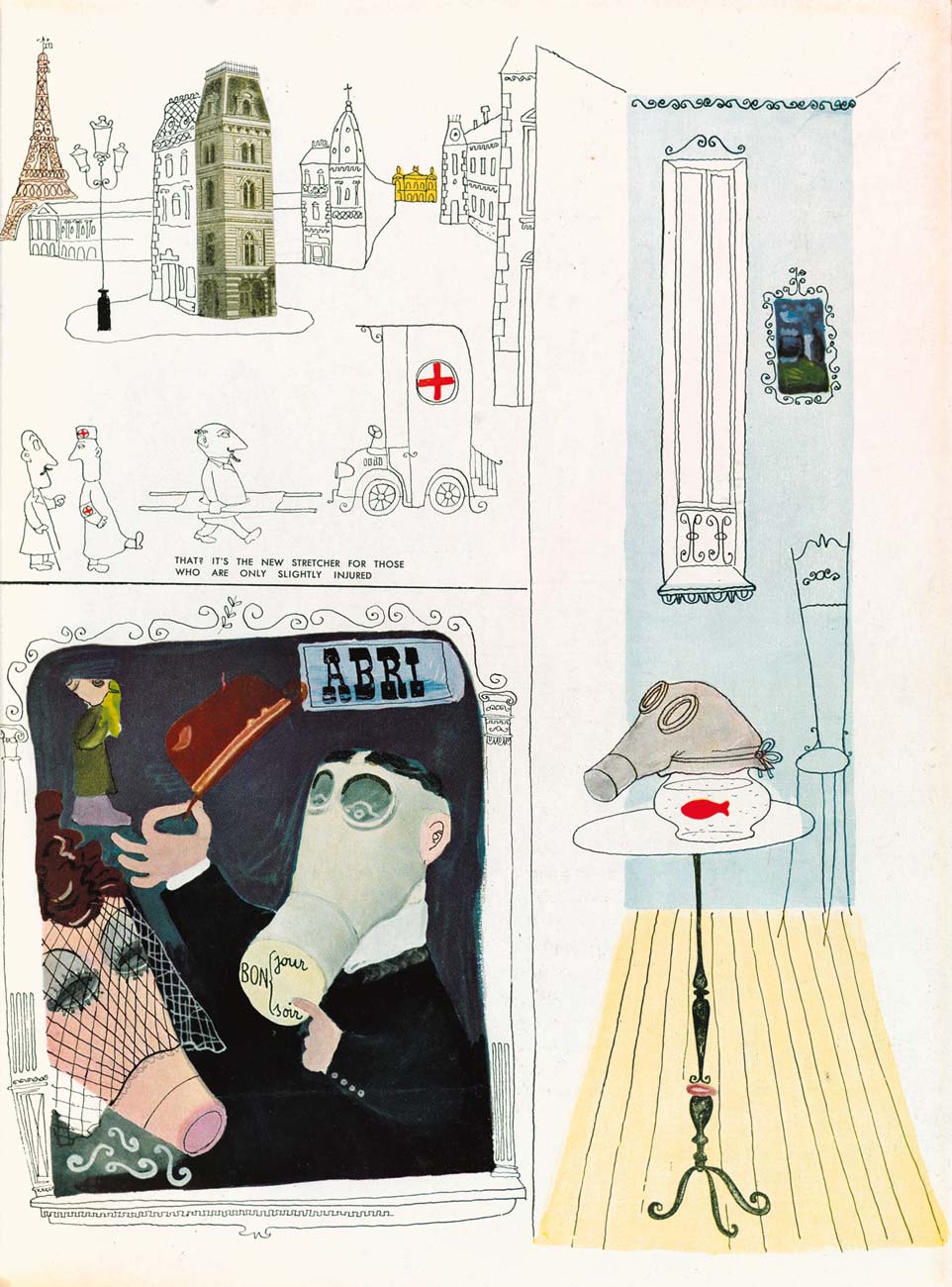
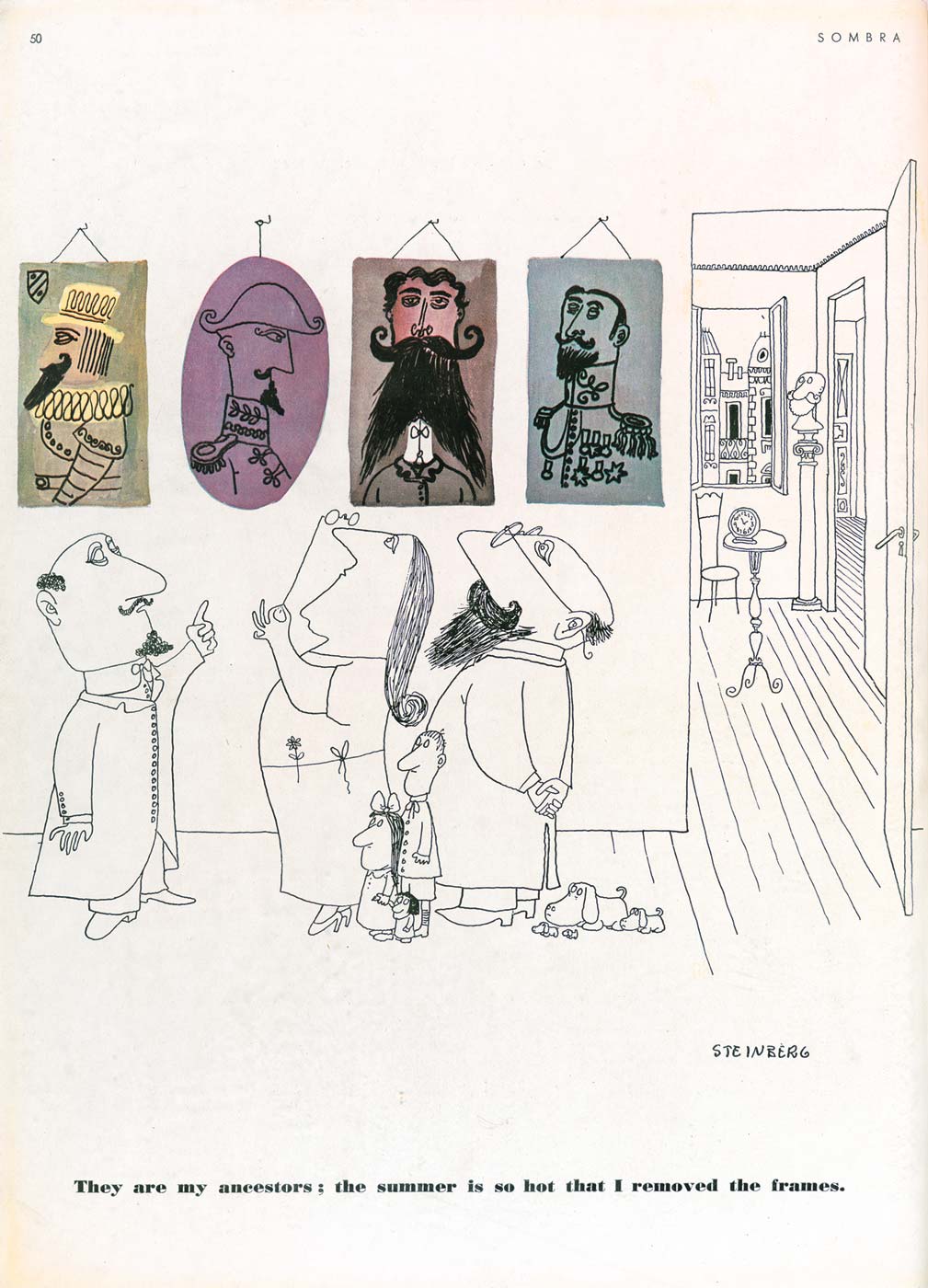
March, passes his thesis exam at the Politecnico and receives his doctorate in architecture the following month. The diploma is made out to “Saul Steinberg…of the Hebrew race.”
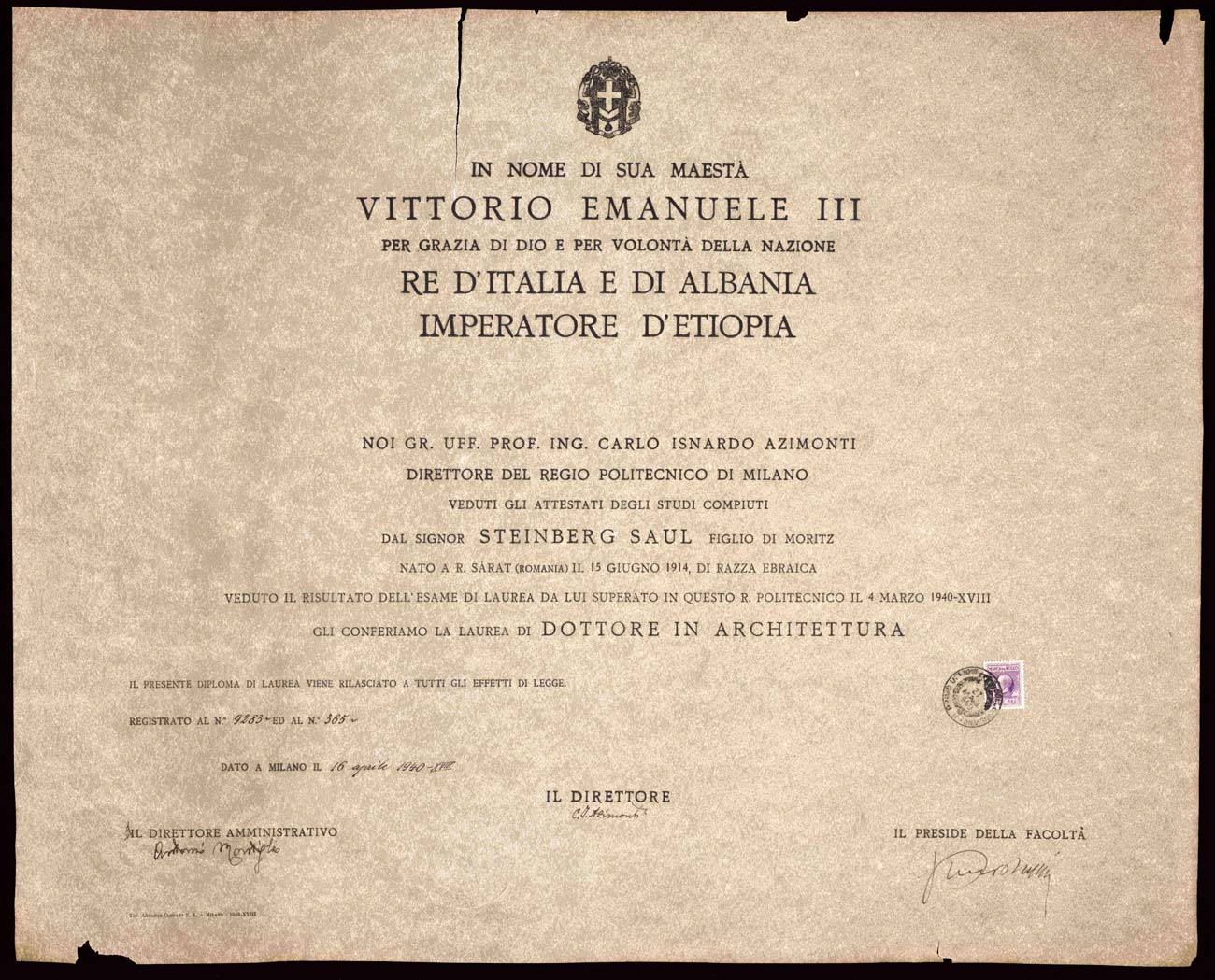
Graduation ends his legal residence in Italy and he must find refuge elsewhere. His family and Civita fail to get him a US visa. Henrietta Danson enlists the aid of her boss, newspaper publisher Cornelius Vanderbilt, Jr. Along with Civita, they approach the Dominican Republic Resettlement Association.
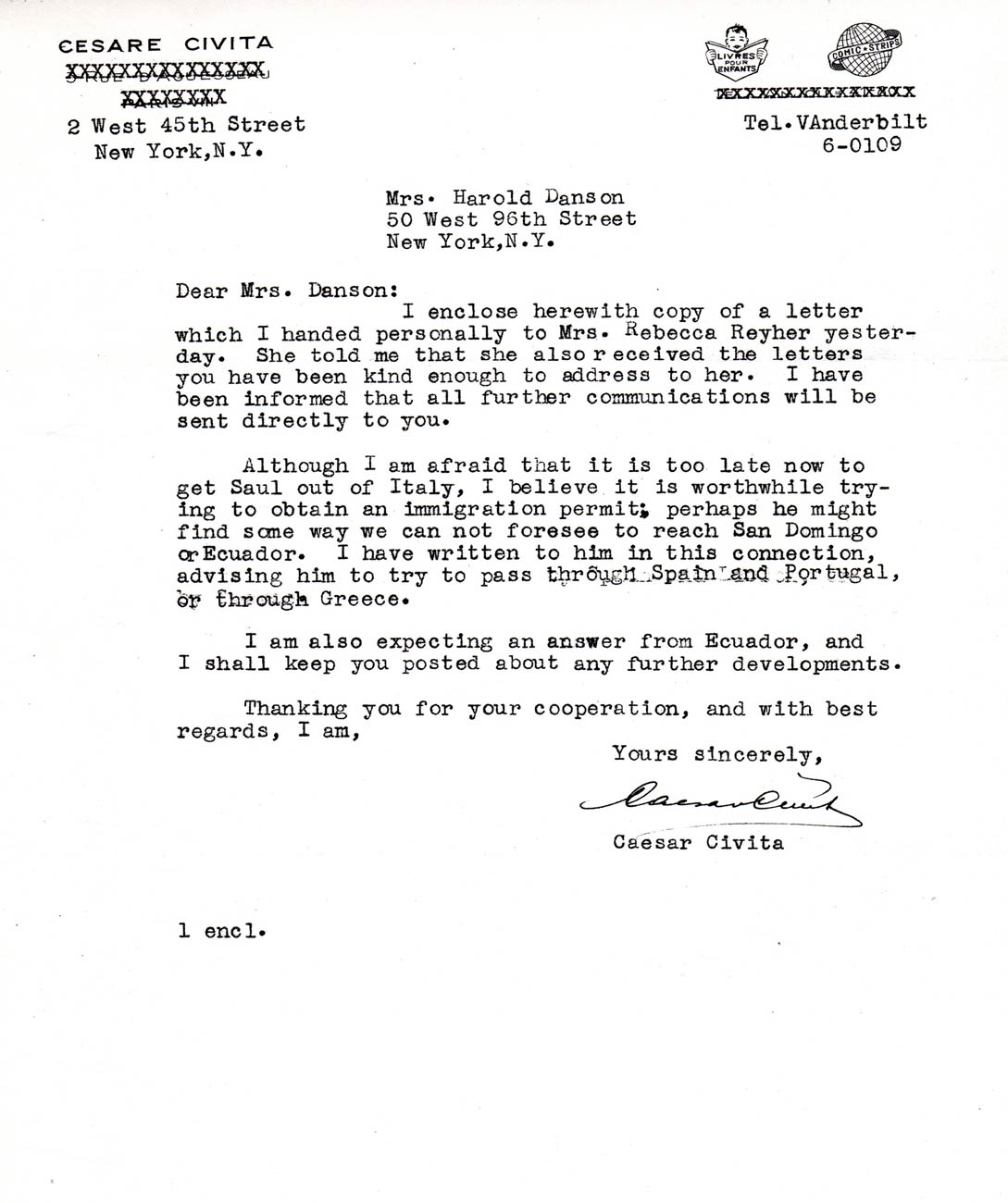
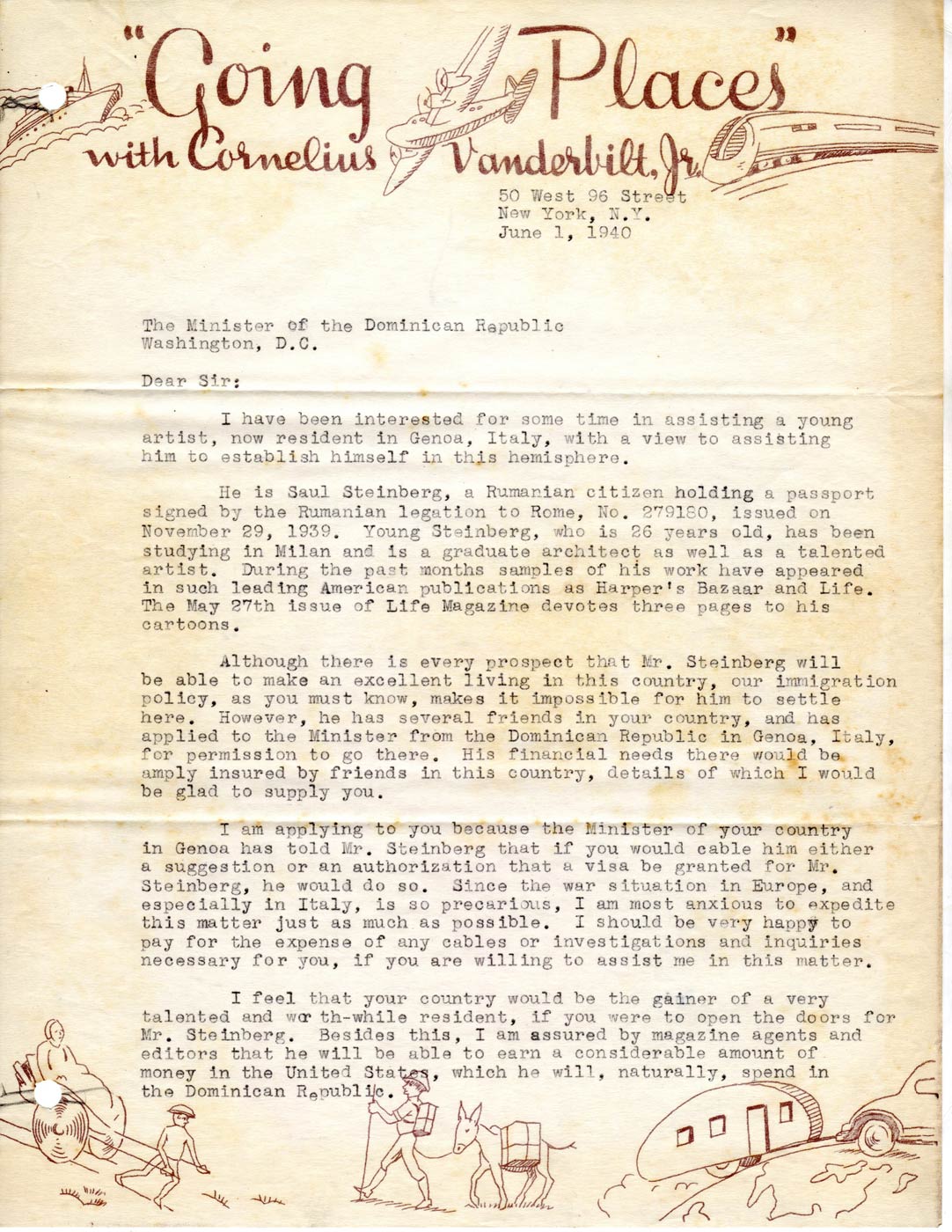
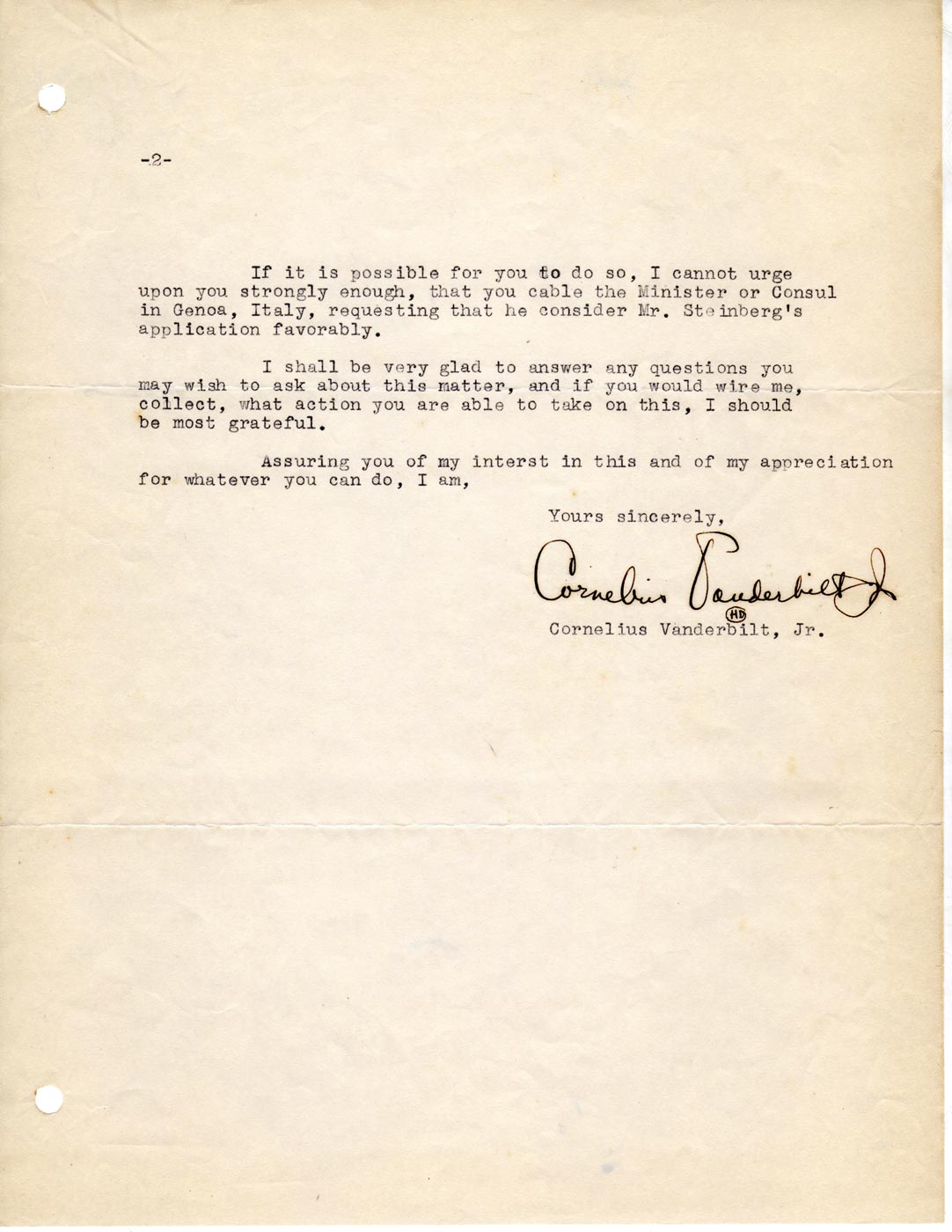
July, receives a visa for the Dominican Republic and, from his family and Civita, a ticket on a boat leaving Lisbon for Ciudad Trujillo (now Santo Domingo) via New York. ST must obtain Spanish and Portuguese transit visas to get to Lisbon and a US transit visa to pass through New York.
September 6-7, with all but the US transit visa in hand, flies to Lisbon, but the Portuguese authorities stop him at the airport and force him to return to Milan. In May, his application for a tourist visa had been rejected because Portugal did not want an influx of “undesirable” Romanian Jews and he had been placed on an unwanted list by the secret police. The new transit visa had been issued in error. ST never knew why he had been turned back, but he always remembered September 6 as “my most dramatic disaster—my black Friday.”
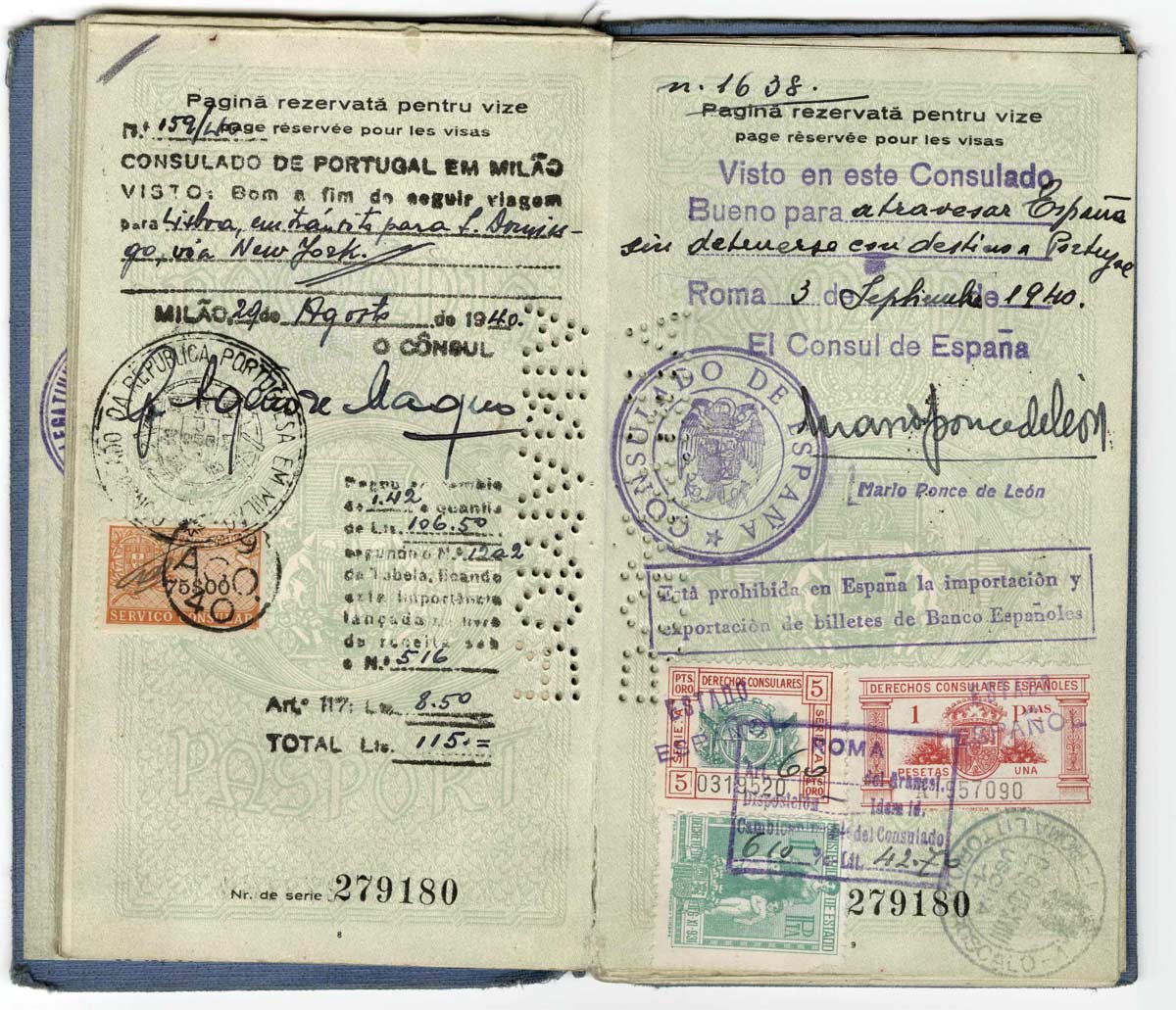
November, Bertoldo and Settebello resume publishing his drawings, but without signature; also publishes a few works in other Italian newspapers and magazines.
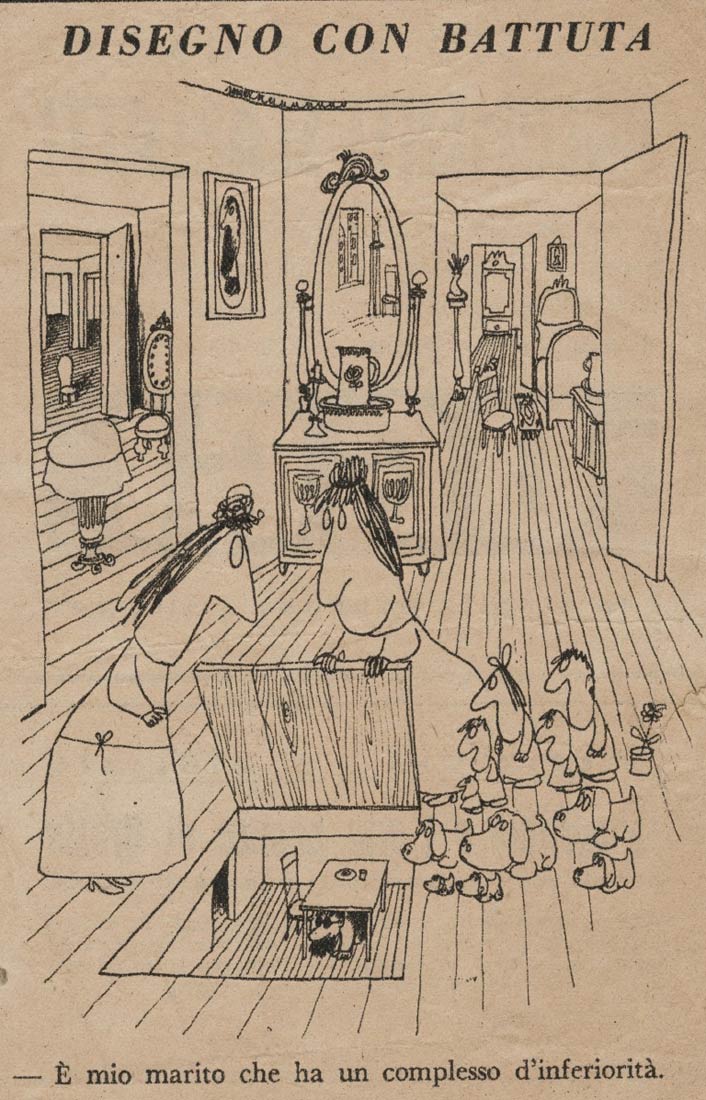
December, the Romanian legation in Rome refuses to renew his passport. He is now officially stateless and subject to arrest and internment; sometimes lives in his apartment but also hides in the homes of friends. Spends time with Ada, Buzzi, and other friends; reads, visits galleries, and goes to the movies.
